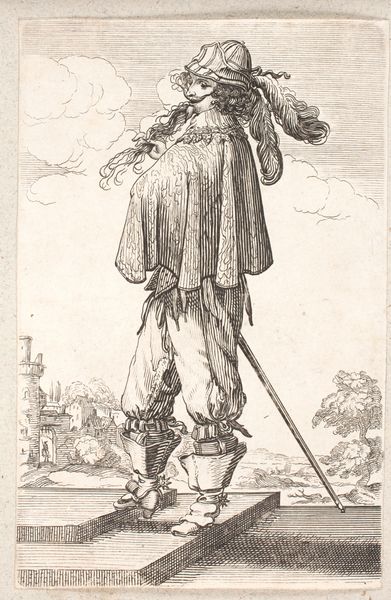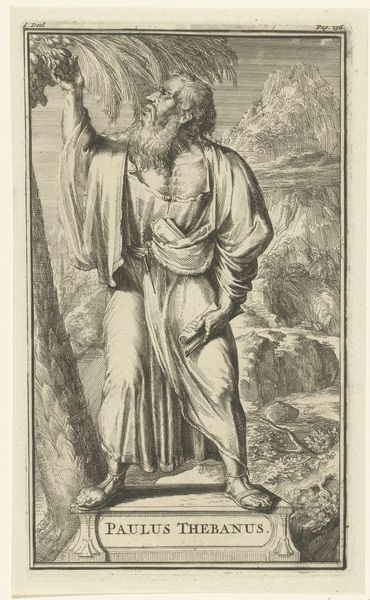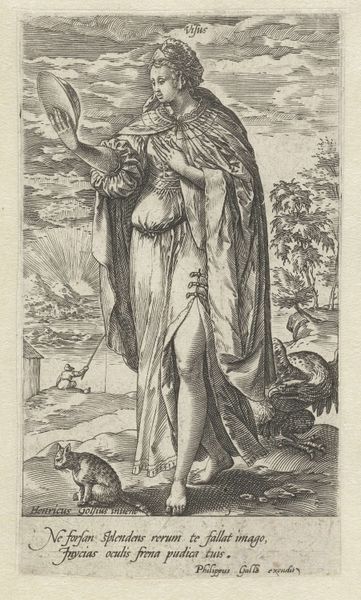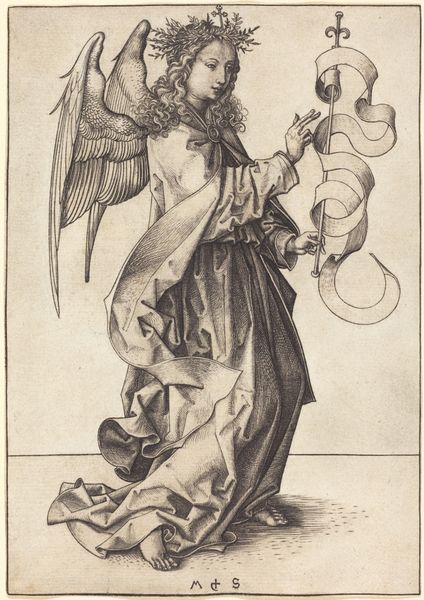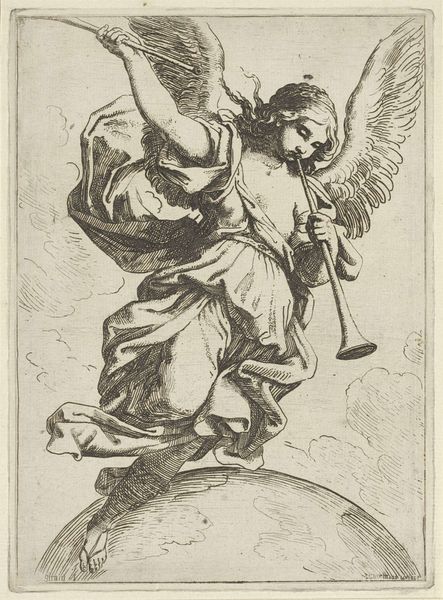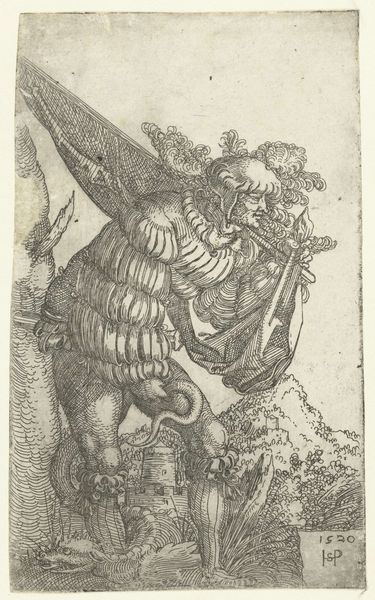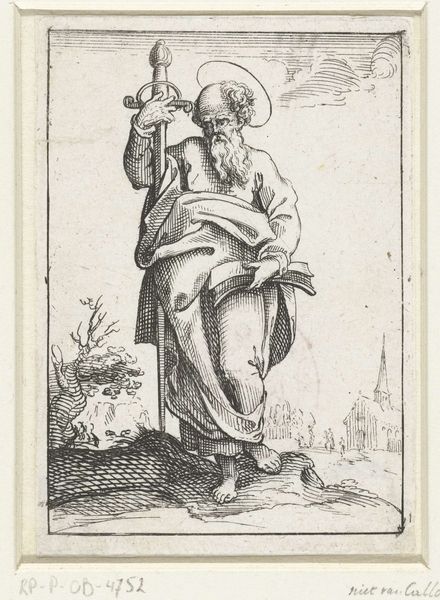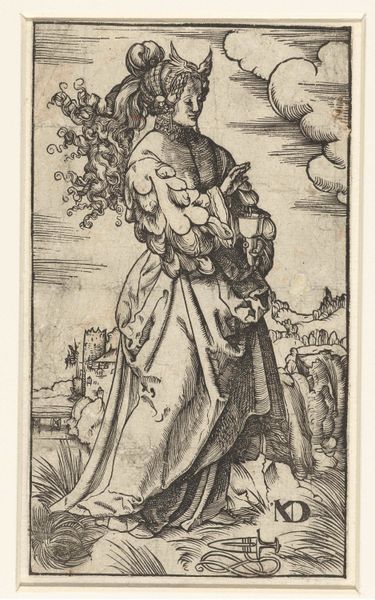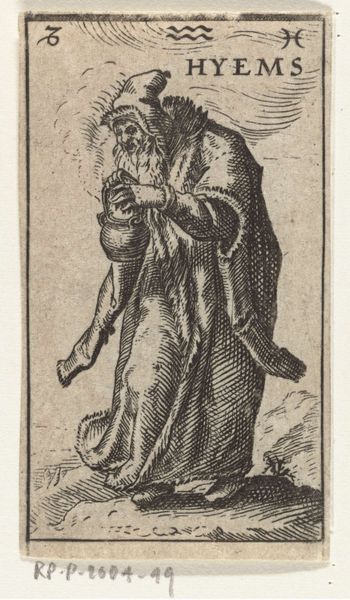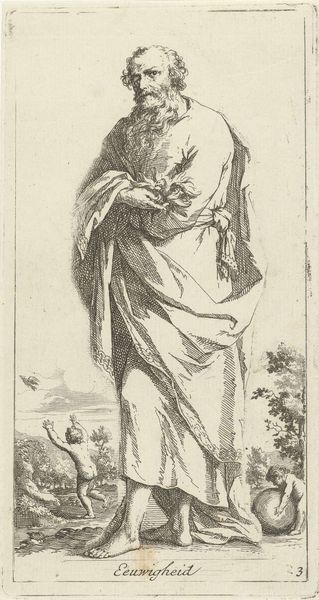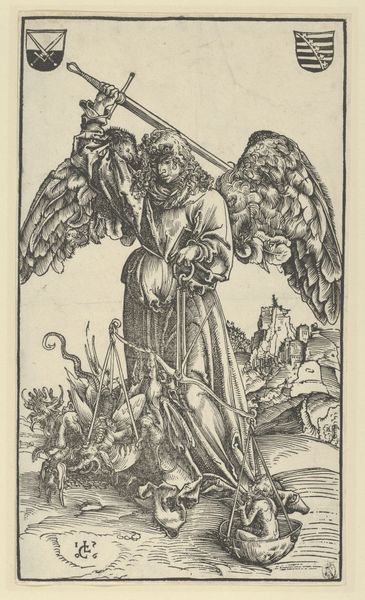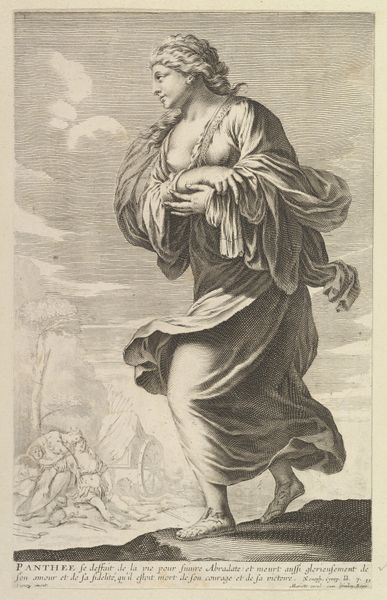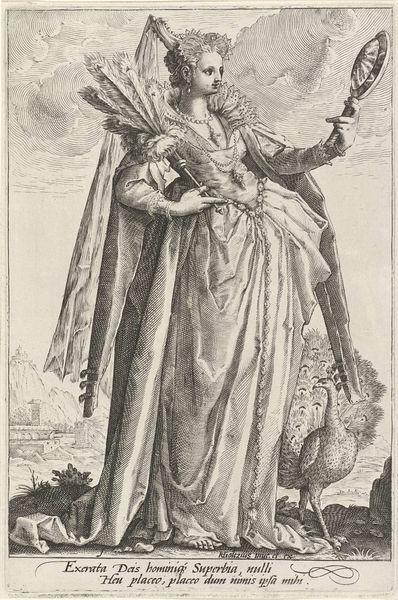
engraving
#
allegory
#
landscape
#
figuration
#
11_renaissance
#
geometric
#
line
#
history-painting
#
northern-renaissance
#
academic-art
#
engraving
Dimensions: height 300 mm, width 200 mm
Copyright: Rijks Museum: Open Domain
Curator: The artwork before us is "Astronomia," an engraving created in 1551 by Hieronymus Cock and currently held in the Rijksmuseum. The image features a winged, draped figure of a woman. What strikes you most about this piece? Editor: It has an ethereal feel. The subject appears almost angelic, with her wings and flowing garments, but there's also something very grounded about her stance and the way she holds the globe. There is something about the geometry of the rendering that gives it a rather rational quality. Curator: That tension between the celestial and earthly is central, I think. The figure stands for astronomy. She’s treading on a rocky outcrop with bare feet. This is contrasted with what she is holding: a celestial globe and a pointer which are, I’d argue, are symbols for cosmic understanding. Consider how it blends classical allegory with then-contemporary scientific curiosity. Editor: Exactly, it reflects the period's merging of classical knowledge with the burgeoning scientific revolution. Holding that globe so purposefully also evokes the sheer volume of collected knowledge that renaissance scholars had to work through. Does her specific posture tell us something? She seems poised to make a point. Curator: Her posture and gesture do emphasize the active role of astronomy, right? It is no longer passive observation. In fact, "astrologia" is printed near the star, pointing at its center. Editor: It also brings up how institutions—like the Church—impacted how art could be used. Did these allegorical images let artists discuss scientific developments more freely? Did astronomy offer some kind of "safe space"? Curator: Undoubtedly. Allegory offered a complex symbolic language. "Astronomia", created for a scholarly audience, is layered with symbols referencing historical knowledge. Notice the horizon is not only broken by city walls and Roman architectural ruin, but that there is Latin inscribed at the bottom. These textual inclusions, these layers, provide an allegorical richness. Editor: I now better appreciate this layering you speak of and its cultural density. Seeing the bridge between science and visual expression through the lens of Hieronymus Cock has really shed light on art’s broader public role in that moment in time. Curator: I agree. Studying Astronomia allows us to consider not only how people during the Renaissance saw themselves in the universe but also the evolving symbols for conveying new insights.
Comments
No comments
Be the first to comment and join the conversation on the ultimate creative platform.
